Being able to construct a Bill of Materials (BOM) effectively is necessary for accurate production planning and efficient manufacturing. What makes the process difficult is that a BOM will be used by several departments within a manufacturing firm – and for different reasons. This makes it highly important to make sure the bills of materials contain the correct information that’s up-to-date and in a format that makes it easy for each group within the organization to extract the data they need to be effective at their tasks.
The best way to start effectively managing bills of materials is to start with a top-down plan that lays out the process of building, maintaining and distributing the BOMs. To ensure the process is followed, the plan has to be built in such a way as to garner buy-in from all the parties using the files. To help along the planning, we’ve put together a list of best practices for creating BOMs:
1. Use a Hierarchical Structure
Organize the BOM in a hierarchical manner, with the finished product at the top level and sub-assemblies, components, and raw materials listed as child items beneath. This clear structure makes it easier to understand the composition of the product.
2. Standardize Naming Conventions
Establish consistent naming conventions for components, sub-assemblies, and materials. Clear and standardized names help prevent confusion and ensure everyone understands the BOM.
3. Part Numbering
Assign unique part numbers or codes to each item in the BOM. Part numbers facilitate identification, ordering, and tracking of components.
4. Provide Detailed Descriptions
Provide detailed descriptions for each item, including specifications, materials, dimensions, and any other relevant information to ensure clarity.
5. Use Consistent Units of Measure and Standards
When specifying the required quantity of each component in the BOM, ensure units of measure are the same throughout the BOM.
6. Include All Components
All necessary components, including fasteners, packaging materials, and labels, need to be included within the BOM. This prevents missing items during production.
7. Practice Version Control
Clearly mark and document BOM revisions and version numbers or dates to track changes over time accurately. Build a plan to outline what is a version and what is a revision within the system.
8. Consider Phantom Assemblies
If necessary, use phantom or pseudo components to represent sub-assemblies that are not stocked but are used in the BOM to simplify planning and documentation.
9. Preference Modularity
Design BOMs with modularity in mind, allowing for easy customization or scalability of products by swapping out components or sub-assemblies. Modularity also reduces the amounts of part types and versions to manage in inventory.
10. Integrate Cross-Referencing
Include cross-references to related documents, such as engineering drawings, CAD files, or work instructions, to provide additional context and guidance.
11. Track Cost Information
Include cost information for each component to calculate the total cost of the product accurately. This helps product engineers build product costing accurately and be able to effectively select alternative parts to hit pricing targets.
12. Document Changes
Implement a formal change management process for BOM updates and revisions. Clearly document the reasons for changes and communicate them to relevant stakeholders.
13. Increase Collaboration
Foster collaboration between design, engineering, production, and procurement teams to ensure that BOMs reflect the most up-to-date product information and align with manufacturing capabilities. Managing BOMs in an MRP system like Aligni can make this process much more efficient and useful.
14. Perform Regular Audits
Plan to periodically review and audit BOMs to verify their accuracy and relevance. This ensures that BOMs remain up-to-date with product changes and market requirements.
15. Practice Data Security
Implement data security measures to protect sensitive BOM information from unauthorized access or alterations. Retaining BOMs in Cloud-based systems like Aligni MRP provides off-site backups and greater security over managing BOMs in spreadsheets on internal servers or employee’s machines.
16. Utilize Effective Training
Provide training to employees involved in BOM creation and management to ensure that they understand the best practices and adhere to them consistently. It’s important to continue training to re-enforce proper procedures over time.
Streamlining the Process
With any process, keeping the steps in the plan followed is the most difficult aspect. Managing BOM’s in a purpose-built software system is the best way to make sure everything works as outlined. For this process, many small and medium-sized businesses prefer to use Material Requirements Planning (MRP) systems to manage their BOMs.
A well-implemented Material Requirements Planning system plays a pivotal role in enforcing Bills of Materials best practices within an organization. Firstly, an MRP system acts as a centralized repository for BOM data, ensuring consistency and standardization across the board. It enforces naming conventions, part numbering schemes, and hierarchical structures, reducing the chances of discrepancies and errors in BOM construction. Moreover, MRP systems often come with validation checks that flag data entry errors or inconsistencies in BOMs, prompting users to correct them before proceeding. This real-time validation helps maintain data accuracy and adherence to BOM best practices.
Secondly, MRP systems facilitate version control and change management for BOMs. They allow for the documentation of revisions, version numbers, or dates associated with BOM updates. This traceability ensures that stakeholders are aware of changes and can assess their impact on production planning and resource allocation. MRP systems provide access control and permissions management, safeguarding sensitive BOM information from unauthorized modifications. Overall, an MRP system not only encourages adherence to BOM best practices but also streamlines BOM management processes, making it easier for organizations to construct, revise, and maintain accurate BOMs in line with industry standards and internal policies.
By following these best practices and managing them in an effective MRP system like Aligni, organizations can create BOMs that are clear, accurate, and flexible, which is essential for effective production planning and successful manufacturing processes.
If you’re ready to take the next step in managing your bills of materials, then it’s time to sign up for Aligni today!
Start your 30-day free trial
Helping You Make Great Things…Better.

